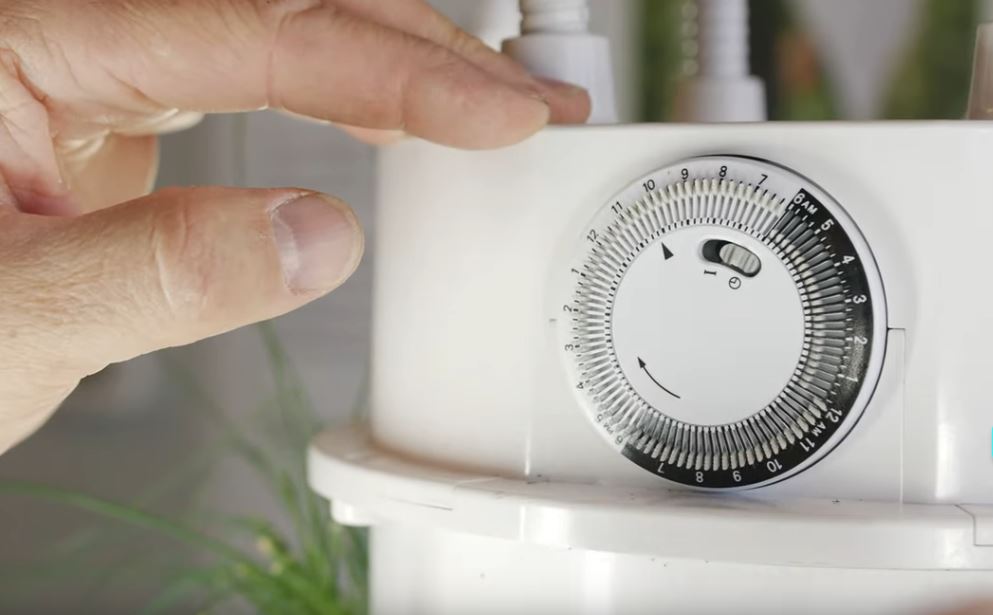Setting up Your Hydroponic Light Timing Schedule
by Kevin
It's quite hard to get the right hydroponic light timing schedule for your system, especially if you're growing several different plants in your greenhouse. Then there's the power consumption issue you'll have to face. Find out how to solve this difficult problem with the help of the following article.
Contents
Setting up Your Hydroponic Light Timing Schedule
Hydroponic lights are usually judged in quality depending on how well they perform and how much bang they can bring for the buck. High Intensity Discharge lamps, such as metal halide or high pressure sodium based ones are amongst the best from this point of view, but they have one major flaw: they're very power hungry.
Power consumption is becoming an increasingly important aspect for gardeners, because your hydroponic light system can add quite a sum to your electric bill and there are just two ways to work around these high costs: getting a different, less intense and powerful type of lamp, or simply optimizing your hydroponic light timing schedule better.

In order to set up a hydroponic light timing schedule that's efficient, yet gives enough light fuel for your plants, you'll have to be aware of what are the needs of what you're growing.
Plant Categories for Light Needs
All plants love light, but some are more pretentious than others. There are three types of plant categories when it comes to light needs: long day plants, day neutral plants and short day plants.
Long day plants, as the name suggests, need a longer "day" period, meaning that they need more light during the course of 24 hours. These plants, such as lettuce, wheat, turnips or bromeliads, will be better off if you fix your hydroponic light timing schedule to giving them at least 18 hours of light.
If you're growing anything that needs so much light, having a power efficient system pays off best, so instead of using high intensity discharge hydroponic lights, such as metal halide or high pressure sodium lamps, you can go for some fluorescent lamps, or some red-blue led lights.
These won't be as powerful and they won't give your plants a full spectrum of light temperatures, but they will still provide the essential light components, at a relatively good power efficiency ratio.
Day neutral plants need good lighting throughout a day cycle, but they will also be able to use some hours in the dark. These plants usually grow well enough if you provide them with 14-18 hours of light, switching your system off for up to 6-10 hours.
The best examples of plants that could do well with such a hydroponic light timing schedule include eggplants, roses, zinnias, tomatoes and strawberries, as well as many other similar fruits and vegetables.
Last but not least, short day plants don't necessarily require a specific amount of artificial light time, but they do require a specific amount of darkness. They use this darkness period as part of their photocycle, in order to produce and develop their flowers.
Still, they need light to feed the rest of the plant cells, so you'll have to balance out these two requirements. Your best bet is to set your hydroponic light timing schedule to be on for 12 hours and off for the other 12, giving your plants just the right amount of both worlds.
Growing More Than One Plant with Light Needs
Ok, so what happens if you're growing more than one plant and it just so happens that these plants have different lighting needs?
For example, what if you're trying to grow tomatoes in your hydroponics system, but you would also light to grow cauliflower, which is a short day plant? Finding a balanced timing schedule is crucial here. You won't be able to offer neither them the perfect conditions, so it's best to settle for a compromise.
You could light up your hydroponics system for around 14 hours or so, since the 2 hour difference that each plant will get won't be so noticeable in the long run. If you can isolate them in your greenhouse, that would be great, but that's rarely a possibility.
So just try to tend to all your plants needs equally and hope they get used to the fact they're not alone in there and need to respect their neighbors.
Thoughts on "Setting up Your Hydroponic Light Timing Schedule"
 |
 |
 |
 |
Hydroponics Tips